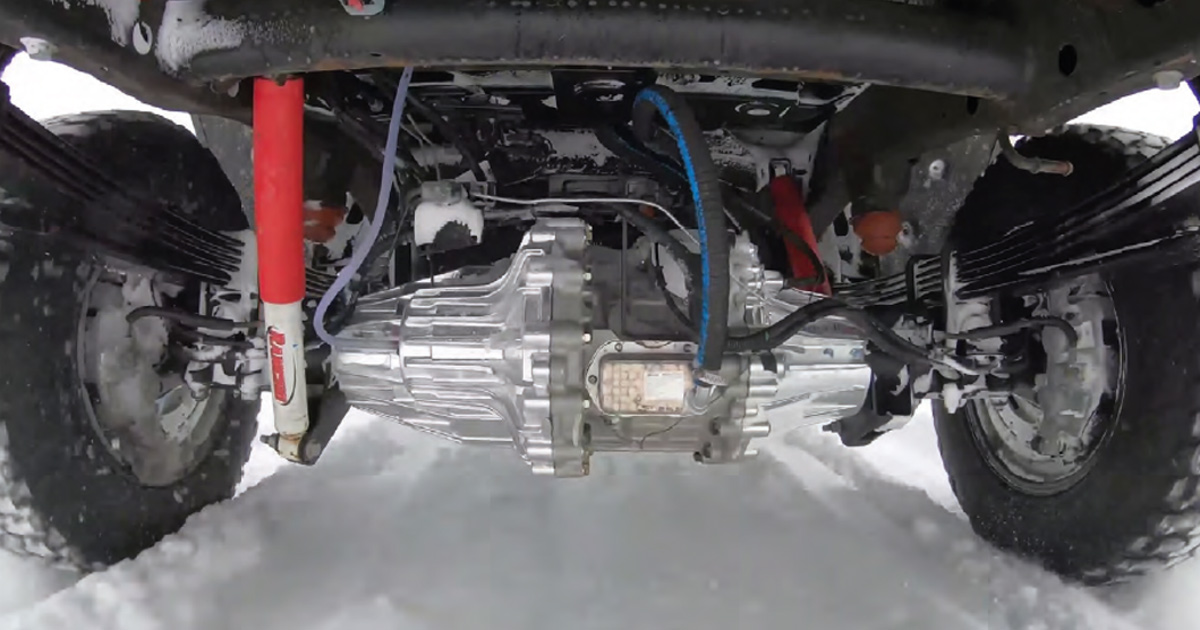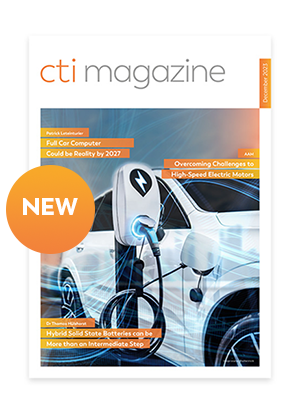
Although light trucks and light commercial vehicles are used for different purposes, the requirements are similar in terms of robustness, performance, package compatibility, etc. The Magna eBeam™ family offers a flexible electrification solution that covers class 1 to 6 trucks as well as LCVs up to 7,5 tons.
Introduction:
The electrification of pickup trucks has recently become a major topic, especially in North America. Solutions are needed that do not compromise on robustness, payload, or towing capacity. In Europe, these trucks have been playing a comparatively minor role so far. However, there is a big market for electrified light commercial vehicles (LCV) and small commercial trucks. These may not have major require-ments regarding off-road capability, but the expectations for payload capacity are similar.
The Magna eBeam™ product family, is compatible with class 1 to 6 trucks, which compares to a gross vehicle weight of up to 11.793 kg or 26.000 lbs respectively. Regarding LCV and truck classes in Europe, classes are typically differentiated into 4,25 tons and up to 7,5 tons, the latter requiring a special driver’s license. Like in American trucks, there are many different requirements as to robustness, power, package, and weight. The new Magna eBeam™ product family addresses these through several variants, which can be seamlessly integrated into existing vehicle platforms.
Rear axle requirements for trucks and LCVs
Pickups are used for work and transport. They should be able to carry large loads and serve as towing vehicles, for example for boat or equipment trailers. At the same time, they are being used in daily traffic situations, requiring high comfort in terms of suspension, NVH, etc.
LCVs, although their purpose is quite different, have similar requirements. Typical applications are delivery services, logistic companies, vehicles being used by craftsmen, installation services, etc. Especially in terms of the load on the driven axle, requirements are similar to light trucks, sometimes even higher.
Based on customer surveys, Magna developed the new eBeam™ product for all these kinds of private and commercial use. There were several objectives: Firstly, an electric rear axle must not have any disadvantages compared with ICE-based powertrains and drivetrains. Secondly, a cost-effective solution was crucial. Thirdly, the new technology should enable full electrification within the typical ladder frame of existing vehicle platforms.
Suspension architectures for heavy-duty applications
Traditionally, light trucks and some LCVs have often been designed with a beam axle, which has proven to be particularly robust in practice. One main characteristic of the beam axle is its continuous lateral structure for high rigidity. Starting its development project, Magna also investigated De Dion axles and independent suspensions, which are common in passenger cars and SUVs, (Fig. 1). The following characteristics were compared: cost, weight, shaft angle, packaging, towing, and payload capacity.

Figure 1
In comparison, the independent suspension is disadvantageous in terms of cost and weight, but also regarding payload and towing capacity. The De Dion axle showed disadvantages in terms of towing, cost, weight, and payload. Moreover, it is significantly inferior regarding packaging and half-shaft angles, the latter being crucial in off-road driving. In all the areas mentioned, the beam axle proved to be superior for the target applications mentioned.
One potential disadvantage of the beam axle is that it has a higher unsprung mass compared to an independent suspension. The independent suspension, on the other hand, would require a sub-frame system, increasing the sprung mass, and compromising payload as well as towing capacity. Investigations and simulations of typical use cases have proven that the unsprung masses do not result in any noticeable ride comfort disadvantages. The decision was therefore taken to develop a whole family of structure-oriented electric beam axles with different application-dependent design options.
Variants for different applications
The two critical performance factors for the vehicle classes we are looking at are continu-ous power and peak torque. They are primarily influenced by the GVWR, which by definition stands for the gross vehicle weight rating over both axles.

Figure 2
Besides these, there are two more essential requirements defining the drive and beam archi-tecture. One is the package: For example, possible obtrusion of the e-motor into z-direction can be an issue, especially for LCVs with the target to keep a low loading height. Another as-pect is rigidity: It can be said that from 3500 to 4500 kg GVWR (~ 8000-10.000 lbs) upwards, the rigidity of the horizontal eBeam™ structure must meet higher demands, (Fig. 2).
The eBeam™ family includes both coaxial architecture for lighter applications and an offset architecture for Class 3 and above, (Fig. 3). In the coaxial architecture, the eDrive is part of the weight-bearing structure, whereas the offset architecture is mounted to a solid beam structure. The e-motor is installed coaxially, with the gearbox close to the center. All mounting points to the frame correspond to those of conventional suspensions, complying with OEM specifications. The coaxial architecture ensures a similarly compact package as a conventional beam axle. As a result, practically no vehicle-side modifications must be made in terms of package, spring mounting, wheel end, etc.

Figure 3
For applications above – 3250 kg gross axle weight rating (GAWR) an offset architecture of the eBeam™ is available. The offset mounting of the e-motor enables a higher structural rigidity for applications with very high payload and towing requirements. Whereas GVWR defines continuous power and peak torque, GAWR is the defining factor for the axle structure. This is why, depending on the application, the Magna eBeam™ flexible family approach includes both coaxial and offset solutions. For example, depending on the OEMs model alignment, class 3 truck architectures may be based on either coax or offset architectures.
Apart from these two basic design variants, there are some further options: a one-speed version with two e-motors and a two-speed product with one e-motor, as well as an electric locking differential, disconnect system, and a park lock. Especially for certain off-road applications, there is also a steerable eBeam™ for front use available.
Electrification opportunities
The trend towards truck electrification in North America is evident and being pursued by all major OEMs in the US. There are especially two approaches that set the Magna solution from others: One is the modularity and scalability of torque, power, and architecture, which cov-ers all classes of trucks and light commercial vehicles. Secondly, Magna offers the in-house expertise to provide advanced traction and driving dynamics add-on value. For example, this includes dedicated trailer-tow, off-road, rain/snow, and city/highway modes, which dis-tribute the e-motor torque between the front and rear axle for best efficiency, traction, and driving safety under any driving conditions.
As to LCVs, the eBeam™ offers similar benefits. LCV applications may have another purpose, but the requirements regarding power, torque, rigidity, package, etc. are very similar. The eBeam™ family offers the capability to tailor these while relying on standard products of the Magna eDrive family. This makes it a promising and versatile product for the growing field of emission-free delivery traffic.
